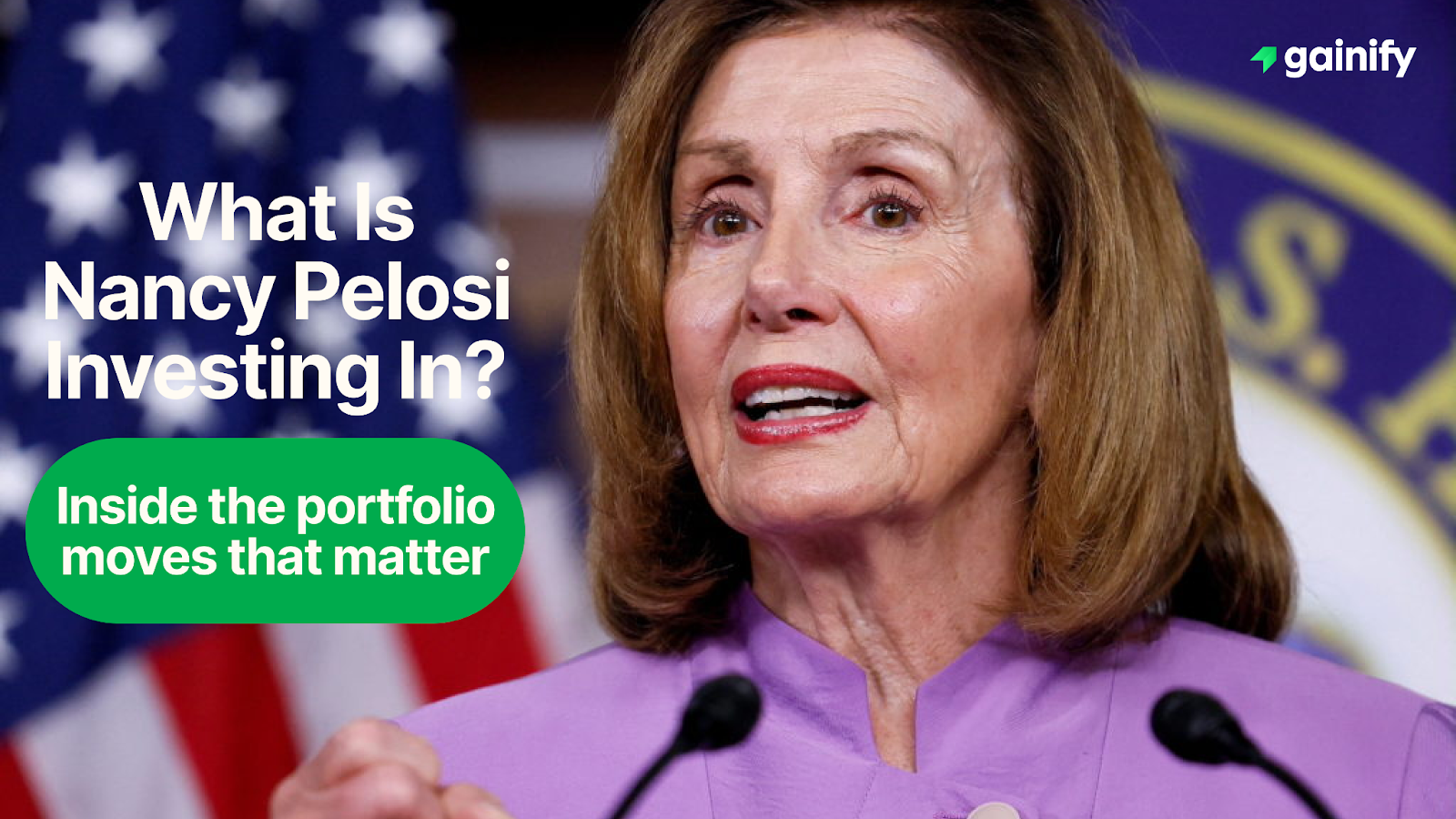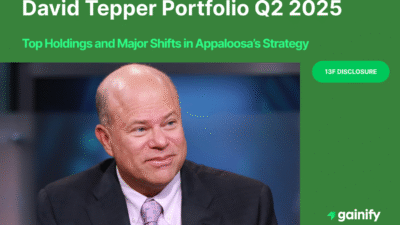Nancy Pelosi, former Speaker of the House and a long-serving member of Congress, has drawn significant attention from investors due to her stock trading activity.
Whether you see it as a curiosity or a strategic indicator, tracking Pelosi’s investments has become a common practice in financial circles. The “Nancy Pelosi stock tracker” is now a popular term among retail traders, who believe her trades can offer clues into legislative momentum or high-conviction opportunities.
While she does not personally manage her investment portfolio, the disclosure of her and her family’s trades, as required by the STOCK Act, has revealed an active and, at times, aggressive investment strategy. Her transactions range from buying deep call options on mega-cap tech companies to exercising those options for notable gains. Some see this as savvy positioning; others raise questions of ethics and influence.
Let’s take a closer look at her most recent trades, what they suggest about her investment style, the impact on the investing community, and the ongoing criticism surrounding it all.
Recent Nancy Pelosi Stock Trades (As of 2025)
Pelosi’s trades span a variety of sectors, but recent filings indicate strong interest in technology, semiconductors, and cybersecurity. Below are some highlights based on her reported trades:
🔼 Key Stock Purchases
1. NVIDIA (NVDA)
Pelosi has made several sizable investments in NVIDIA, including exercising call options and directly purchasing millions of dollars worth of shares. This two-pronged approach highlights her strong conviction in NVIDIA’s leadership in AI, semiconductors, and its central role in enabling next-generation computing technologies.
2. Palo Alto Networks (PANW)
A major cybersecurity play. Pelosi bought call options on PANW and later exercised them once they moved in the money, showing strong conviction in the stock’s upward momentum. It reflects a calculated bet on the increasing importance of digital infrastructure in both public and private sectors.
3. Tempus AI (TEM)
An AI-enabled health-tech company specializing in diagnostics and data-driven healthcare solutions. Pelosi purchased call options in Tempus AI, signaling early confidence in the firm’s high-growth potential. The stock has since attracted significant market attention, underscoring broader investor interest in precision medicine and AI’s disruptive role in healthcare.
4. Amazon (AMZN) & Google (GOOGL)
Pelosi bought call options in both tech giants. These bets suggest she sees continued upside in e-commerce, cloud computing, and advertising revenue, particularly with Google Cloud and Amazon’s logistics scale.
5. Vistra Corp. (VST)
Through a sizable options trade, Pelosi added exposure to the energy sector. Vistra provides diversified utility services and is increasingly focused on power infrastructure, likely a strategic hedge within her broader portfolio.
🔽 Notable Stock Sales
1. Apple (AAPL)
Pelosi sold over $5 million in Apple stock at the end of 2024. This large sale could reflect profit-taking or portfolio rebalancing, especially after years of strong performance in tech stocks.
2. NVIDIA (NVDA)
In addition to ongoing purchases, she also sold a portion of her NVDA shares, possibly to lock in gains or reallocate capital elsewhere. Despite trimming, she continues to maintain a large stake.
3. Microsoft (MSFT)
A partial exit from Microsoft in mid-2024 suggests Pelosi may have been reallocating capital toward higher-growth opportunities or adjusting her portfolio exposure within the tech sector.
4. Visa (V)
She sold shares of the financial services firm Visa in mid-2024. This could be tied to shifting priorities within her stock portfolio or changing views on fintech valuations.
What Sectors Is Nancy Pelosi Bullish On?
Based on trade volume, Pelosi’s portfolio is heavily weighted toward:
- Information Technology (including semiconductors and cloud computing)
- Cybersecurity (via Palo Alto Networks)
- Artificial Intelligence and Health-Tech (through NVIDIA, Tempus AI, and Alphabet)
She frequently favors healthcare stocks, tech stocks, and high-quality undervalued stocks. These include both large-cap and small-cap companies. It reflects a clear alignment with growth stocks in sectors with long-term tailwinds and substantial returns potential.
Investment Style: High Conviction, High Octane
Nancy Pelosi’s recent investment activity shows a strong preference for high-growth, innovation-driven sectors. Her portfolio is primarily concentrated in the following areas:
- Information Technology – including semiconductors, cloud infrastructure, and major platforms like Alphabet and Microsoft
- Cybersecurity – notably through significant call option activity and stock positions in Palo Alto Networks
- Artificial Intelligence and Health-Tech – with targeted investments in NVIDIA and Tempus AI, both of which sit at the intersection of data, diagnostics, and next-generation computing
Pelosi consistently favors a mix of healthcare stocks, tech stocks, and high-quality undervalued stocks. Her trades span both large-cap giants and small-cap disruptors, signaling a belief in secular growth stories backed by technological advancements.
This sectoral bias aligns closely with long-term macro trends and reflects a portfolio strategy aimed at capturing substantial returns from transformative innovation.
Impact on the Investment Community
The disclosure of Pelosi’s trades has fueled the rise of real-time political trade trackers like Gainify, Capitol Trades and Quiver Quantitative. These tools allow average investors to replicate or monitor trades by political figures, further blurring the line between public service and private capital gains.
Retail investors now view congressional stock trading as a legitimate signal, spawning model portfolios and even copy-trading strategies. Her moves often go viral on Google Search and social media, especially when trading stocks show excess return.
This influence has sparked the creation of ETFs mimicking congressional activity and inspired both mainstream and alternative stock media coverage, including analyses on money and political investing.
Criticism and Controversy
Despite public access to these trades, Pelosi’s investing activity has faced growing scrutiny:
- Critics argue that lawmakers should be prohibited from owning individual stocks to avoid potential for conflicts of interest.
- Senator Josh Hawley has even proposed the Hawley Autopilot Act, demanding stricter regulations on trades by political figures.
- The use of financial disclosure statements to track trades creates transparency, but some question if it’s enough.
While defenders claim Pelosi is compliant and her trades are managed independently, the optics of bold investments, like those in emerging AI and defense tech, raise questions about timing and insider knowledge.
Concerns around dark money, donor money, and advertising revenue in political spheres only amplify the call for reform. The idea that members of the Company Committee could trade in sectors they influence continues to stir public debate.
Nancy Pelosi Tracker: Should You Follow Her Trades?
While it’s unwise to blindly copy any investor, Pelosi’s trades are often interpreted as signals of political alignment or sectoral momentum. Investors track her moves because:
- Timing sometimes aligns with upcoming legislation or regulatory clarity
- Returns on disclosed trades have been materially positive
- Her portfolio mirrors some of the top growth and innovation names in the market
She also holds a dozen stocks at any given time, often among the market’s most-watched names. That includes both blue-chip and alternative stock bets.
That said, it’s essential to do your own due diligence. Pelosi’s portfolio is high risk, with large bets on individual names and use of option contracts. It’s not a conservative retirement strategy, but rather a dynamic, growth-focused one. Every investor has a different risk tolerance.
Conclusion: What We Can Learn
Nancy Pelosi’s trading activity reveals an investor who is unafraid to lean into volatility and concentrate exposure in high-growth sectors. Whether you’re a fan or skeptic, the results speak for themselves: the strategy has delivered both large returns and outsized influence in retail investing circles.
Her investment activity is a blend of high-conviction stock picks, AI and healthcare exposure, and aggressive use of call options. While controversial, it reflects a sophisticated understanding of the stock market.
For those curious about how policymakers navigate markets, Pelosi’s filings are worth watching. But remember – she is not offering financial advice. Every investment carries risk. Treat her trades as a starting point for deeper research, not a guaranteed roadmap to success.
“Success in investing doesn’t come from being right all the time. It comes from being consistently good at managing risk.”
Frequently Asked Questions (FAQ)
1. What stocks is Nancy Pelosi investing in right now?
Nancy Pelosi’s current stock trades, based on the latest financial disclosure statements, show significant positions in NVIDIA (NVDA), Palo Alto Networks (PANW), Google (GOOGL), Amazon (AMZN), and Tempus AI. These reflect a focus on tech stocks, healthcare stocks, and AI-enabled diagnostics companies.
2. Does Nancy Pelosi buy or trade options?
es. Nancy Pelosi regularly uses call options as part of her investment strategy. In many cases, these are deep in the money, reflecting strong conviction in the underlying companies. Call options give her the right to purchase shares at a set strike price, which allows her to benefit from potential upside while limiting initial capital outlay.
Her financial disclosures frequently include option activity in companies such as NVIDIA, Alphabet, and Broadcom. This strategy suggests a high-conviction approach that focuses on capturing gains in sectors with strong momentum, especially in technology and semiconductors.
3. Is it legal for Congress members to trade stocks?
Yes, but members must report trades through financial disclosure statements under the STOCK Act. However, there’s ongoing controversy and bipartisan support for stricter regulations. Critics like Josh Hawley highlight the potential for conflicts of interest, leading to growing support for banning congressional stock trading.
4. Should individual investors copy Pelosi’s stock portfolio?
While many traders track Pelosi’s trades through tools like Gainify, Capitol Trades or Quiver Quantitative, it’s important to understand that these investment decisions come with inherent risks. Her trades may serve as interesting signals, but not as financial advice. Always consider your risk tolerance and portfolio goals before copying any stock picks.
5. Why is Nancy Pelosi’s trading activity so controversial?
Nancy Pelosi’s trading activity has sparked controversy due to the potential ethical concerns surrounding members of Congress investing in individual stocks. As a high-ranking political figure, her access to nonpublic briefings, regulatory developments, and industry-specific legislation raises questions about whether such information could influence her investment decisions. Critics argue that even the appearance of a conflict of interest can erode public trust.



